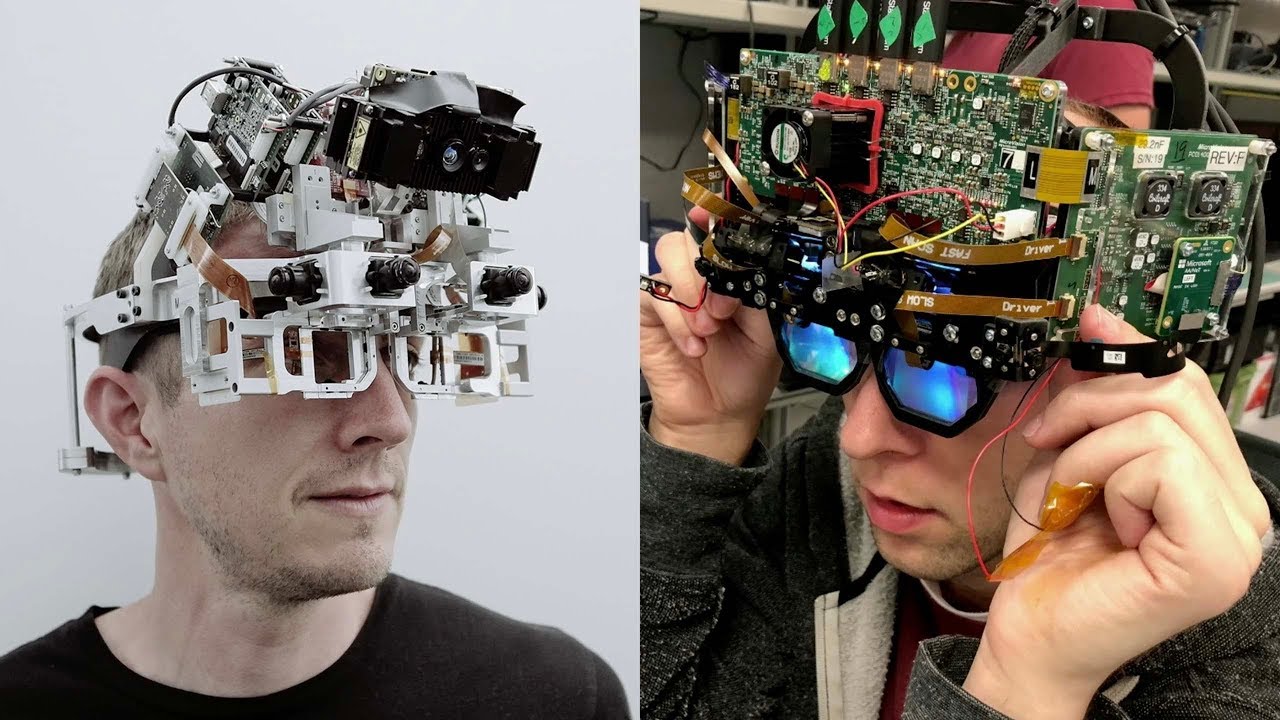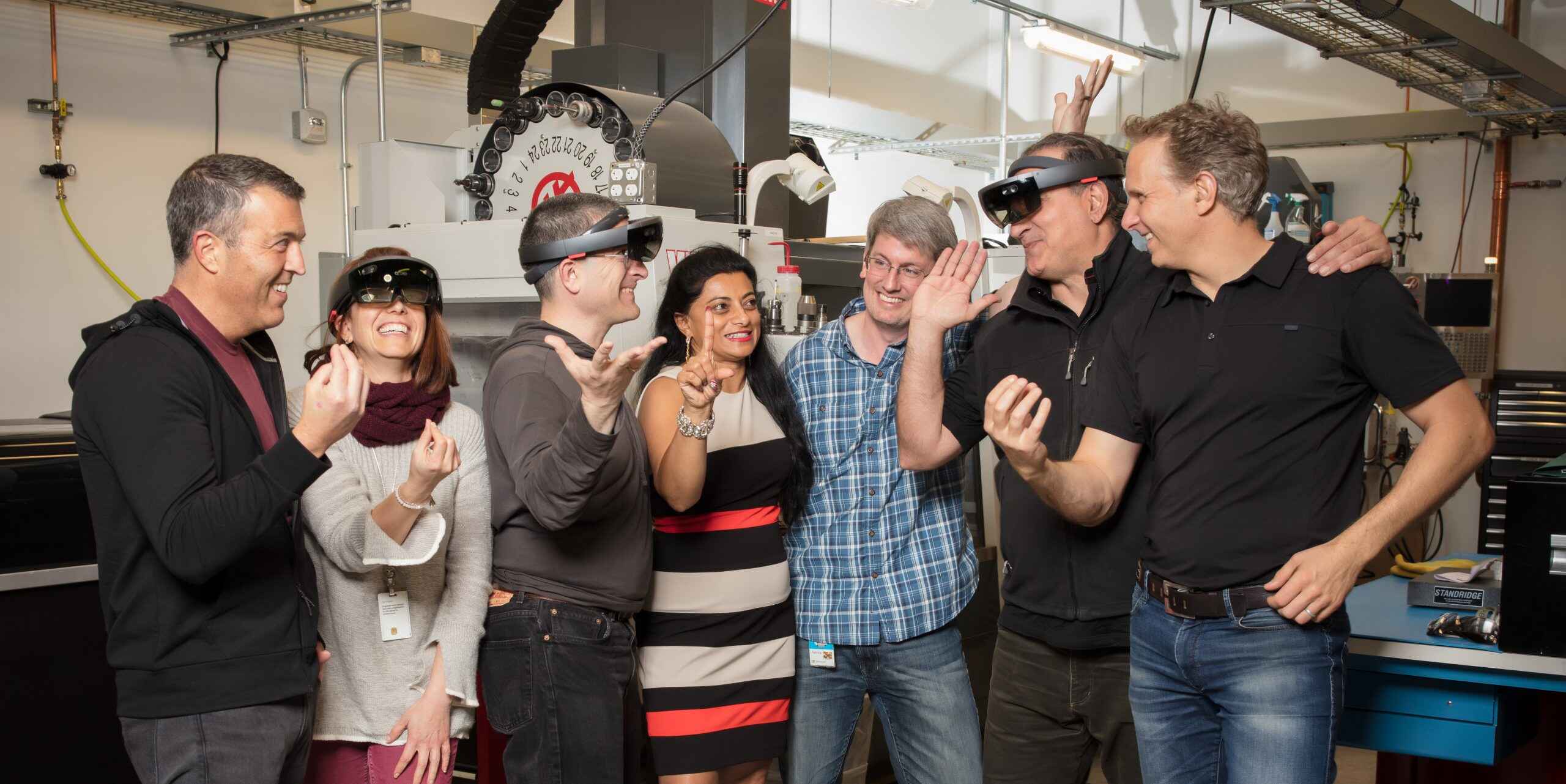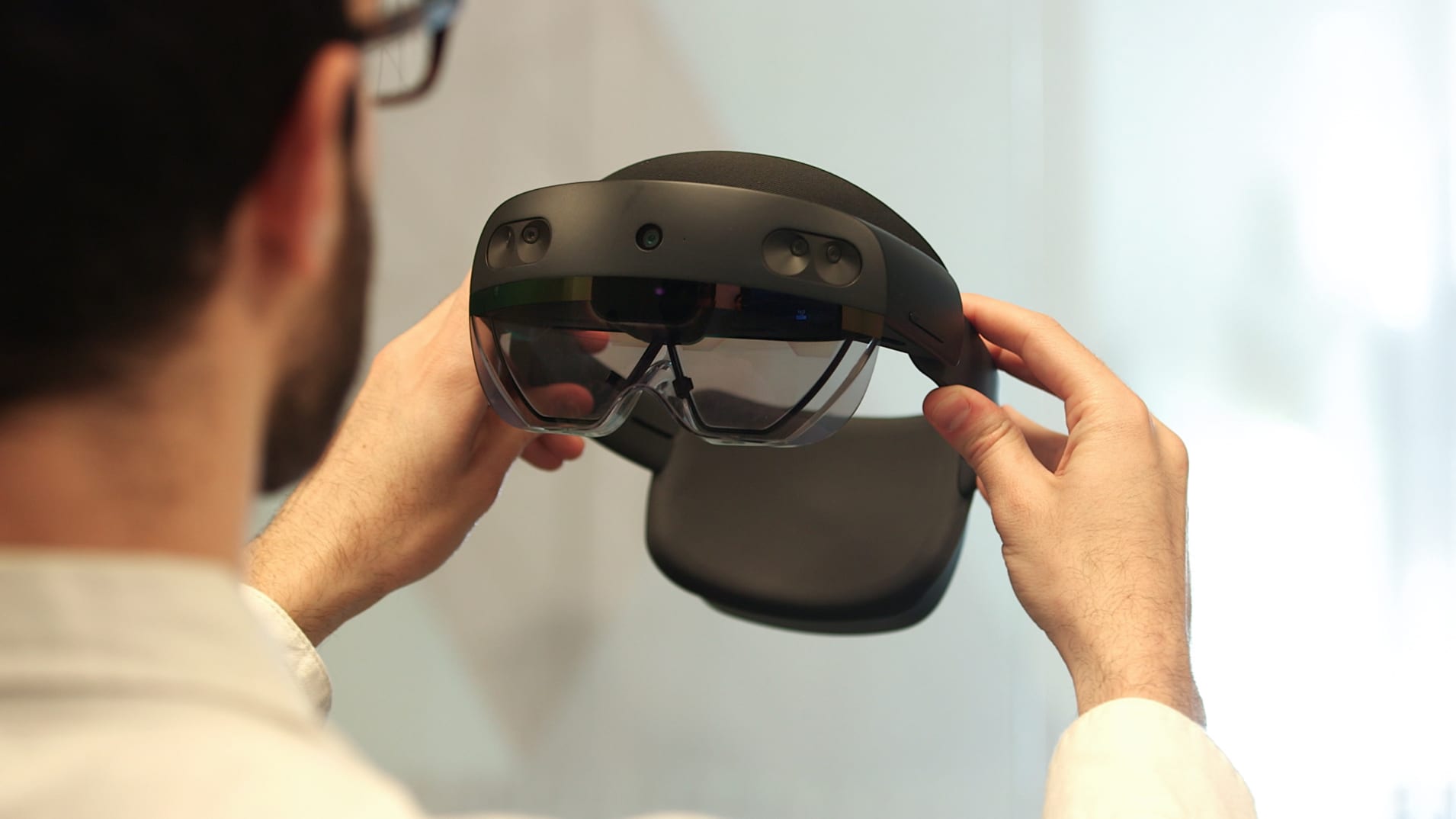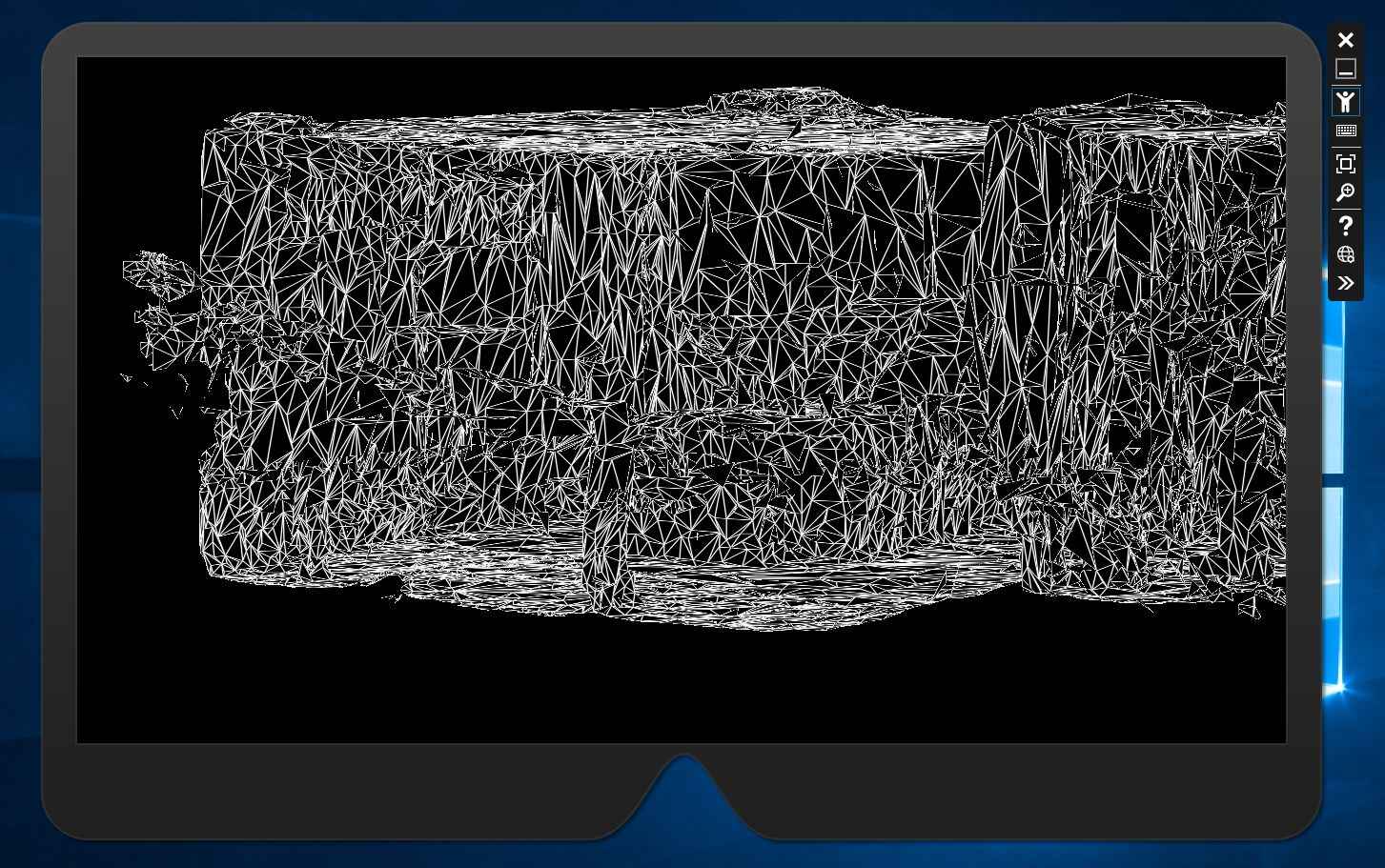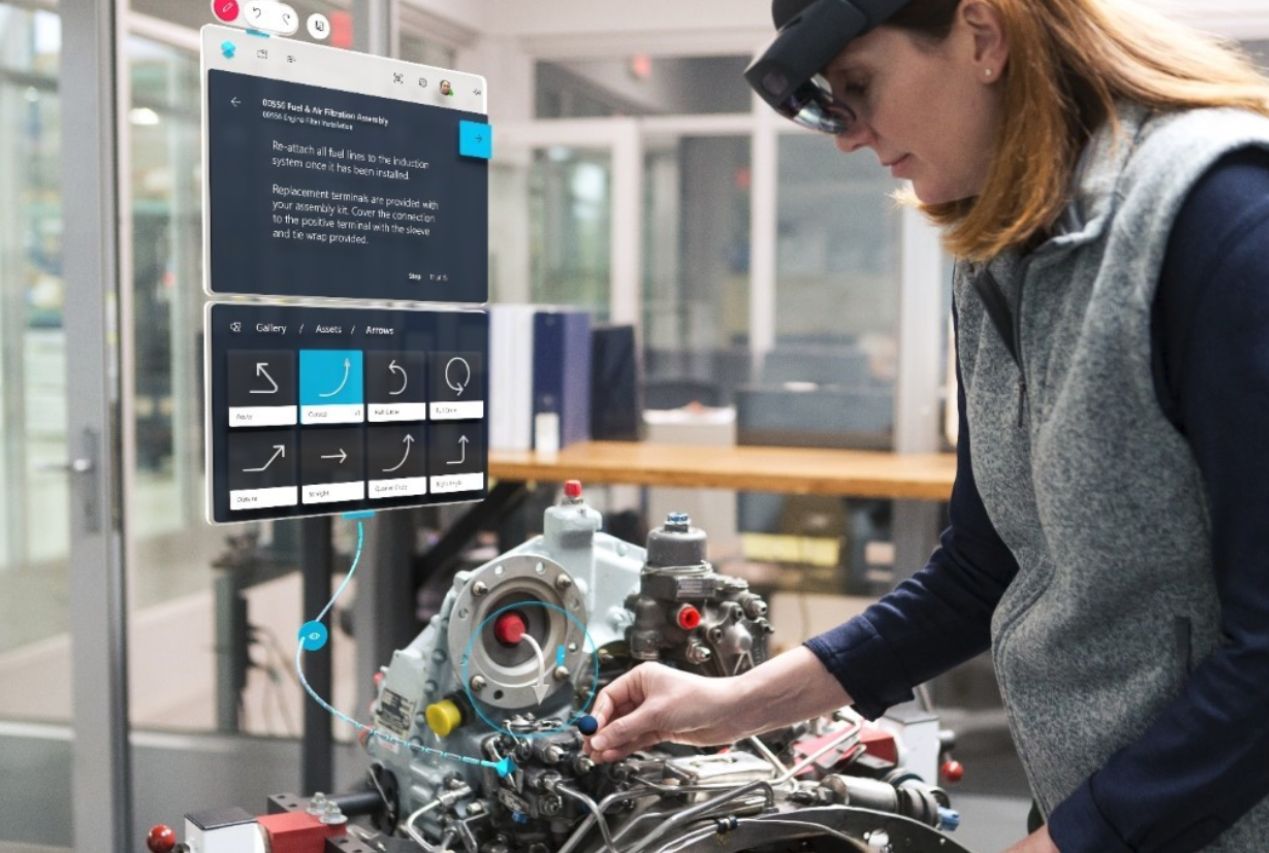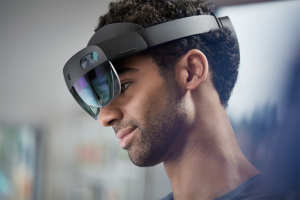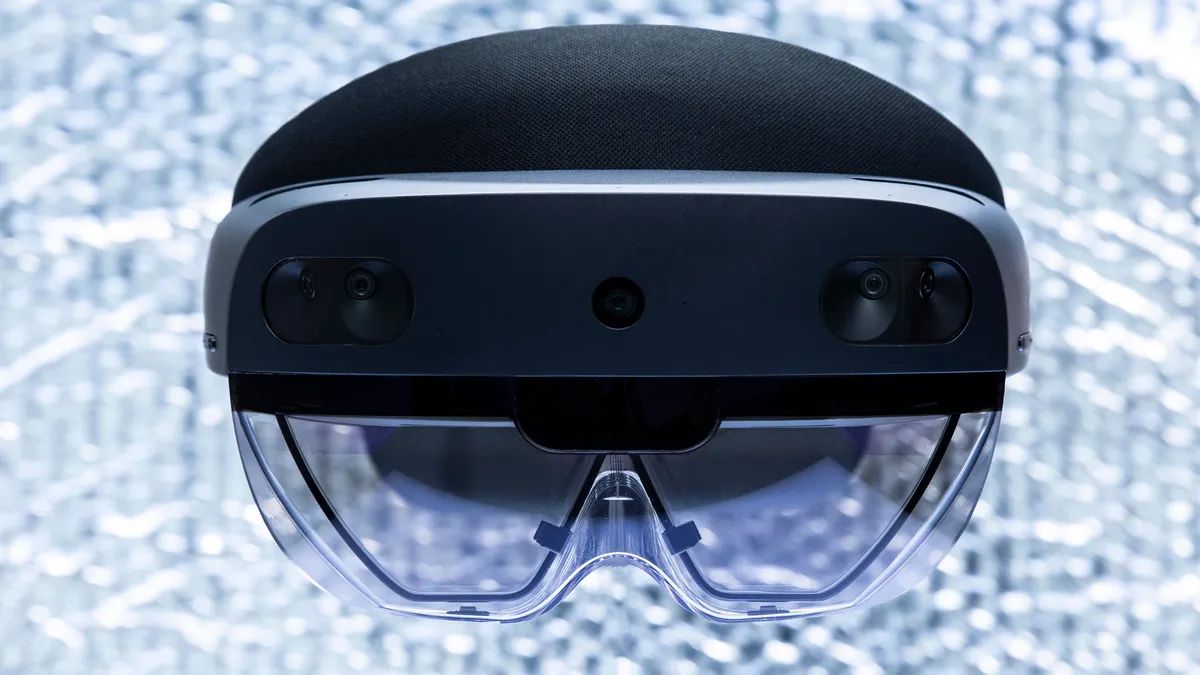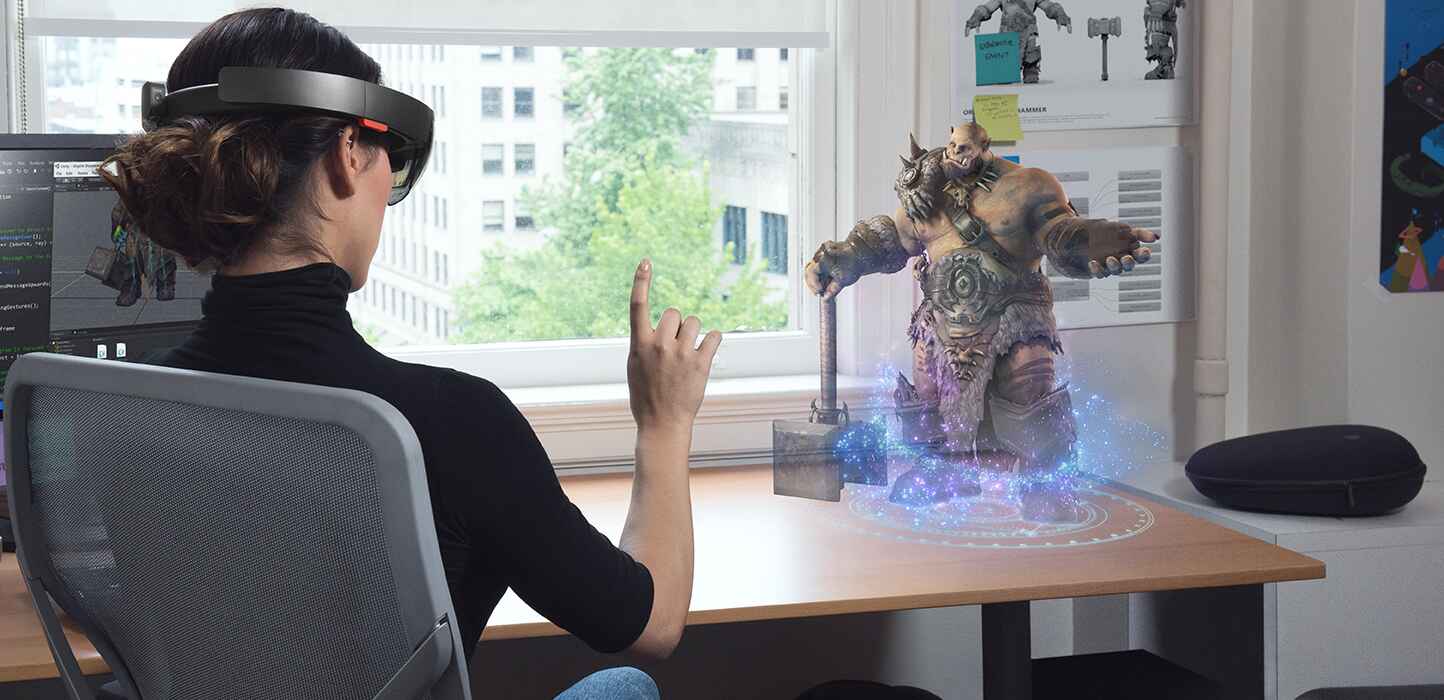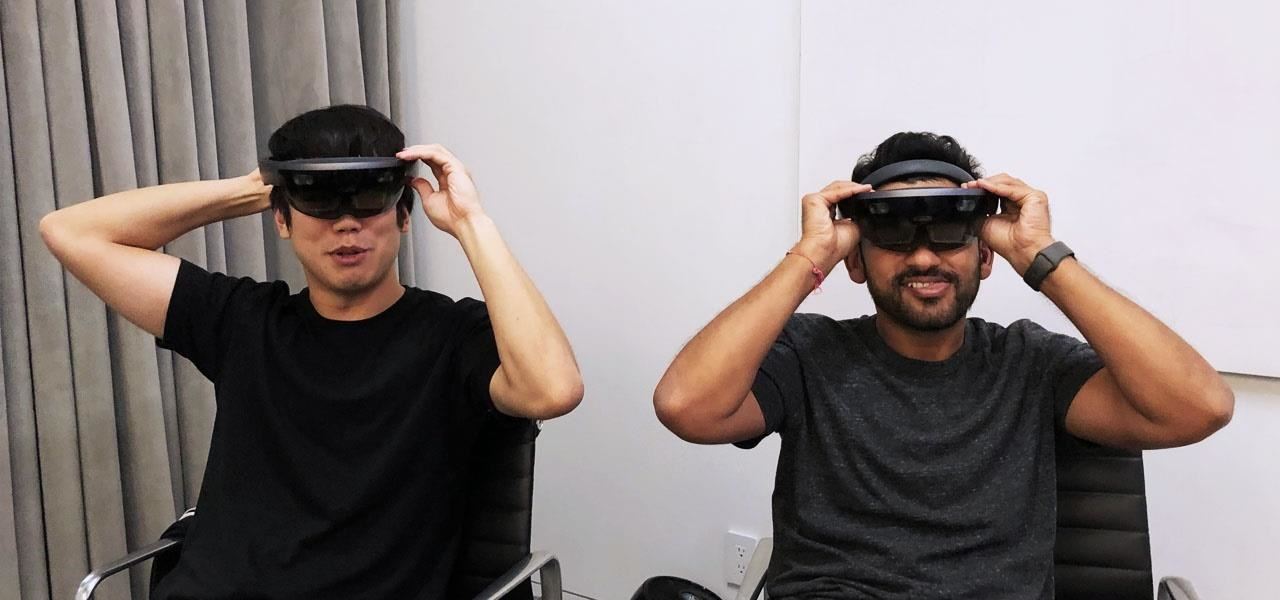Introduction
The HoloLens is a groundbreaking augmented reality (AR) device developed by Microsoft. With its cutting-edge technology and immersive experience, the HoloLens has quickly captured the attention of tech enthusiasts and professionals alike. This innovative device transforms the way we interact with the digital world by blending virtual objects with the real environment.
Unlike virtual reality (VR) headsets that create entirely virtual worlds, the HoloLens enhances our real-world experience by overlaying holographic images onto our surroundings. It enables users to interact with these holograms and seamlessly merge digital content with physical objects. Whether it’s designing 3D models, exploring new educational experiences, or improving productivity in the workplace, the HoloLens offers endless possibilities.
Microsoft designed the HoloLens with a goal to provide a natural and intuitive user experience. It combines advanced optics, spatial sound, and sensors to track the user’s head movements and gestures, allowing them to interact with the holographic content in a hands-free and immersive manner.
In this article, we will explore the features, capabilities, and limitations of the HoloLens. We will delve into the user experience, examine its applications in various industries, and compare it with other augmented reality devices. By the end, you will have a better understanding of how well the HoloLens works and its potential impact on our daily lives.
What is the HoloLens?
The HoloLens is a revolutionary mixed reality device developed by Microsoft. It combines virtual reality and augmented reality technologies to create a unique and immersive user experience. Unlike virtual reality headsets, which completely immerse the user in a virtual environment, the HoloLens overlays holographic images onto the real world, allowing users to interact with both the virtual and physical elements simultaneously.
At its core, the HoloLens is a wearable computer that is equipped with sensors, cameras, and speakers. These components work together to track the user’s movements, recognize gestures, and provide spatial sound, creating a seamless integration of the digital and physical worlds.
One of the standout features of the HoloLens is its advanced optics. The device uses a combination of transparent displays and intricate optical systems to project holograms onto the user’s field of view. This enables users to see and interact with virtual objects in a natural and intuitive way.
The HoloLens is also equipped with robust spatial mapping capabilities. It scans the user’s environment and creates a detailed map of the surroundings, which allows it to accurately place and anchor holograms to physical objects. This spatial mapping technology enables users to interact with virtual content in a realistic and believable manner.
Another notable aspect of the HoloLens is its ability to understand and respond to the user’s gestures and voice commands. Users can use hand gestures to manipulate holograms, zoom in or out, and rotate objects in 3D space. Voice commands can be used to launch applications, navigate menus, and interact with virtual characters or assistants.
Overall, the HoloLens represents a significant leap forward in the field of augmented reality. Its ability to seamlessly merge the virtual and physical worlds opens up a wide array of possibilities in fields such as gaming, education, healthcare, architecture, and more. The HoloLens is not just a device; it’s a platform that empowers developers and users to explore new frontiers of mixed reality.
How does the HoloLens work?
The HoloLens utilizes a combination of innovative hardware and advanced software algorithms to create its augmented reality experience. Let’s dive into the technical workings of this groundbreaking device.
At the core of the HoloLens is a custom-built high-definition holographic display. This display uses a combination of waveguides, projectors, and photonics to project virtual images onto the user’s field of view. These images appear as three-dimensional holograms that blend seamlessly with the real world.
But how does the HoloLens know where to place these holograms in the user’s physical environment? This is where the spatial mapping technology comes into play. The HoloLens is equipped with a depth sensor, multiple cameras, and infrared sensors that work together to create a detailed map of the user’s surroundings. This map is continuously updated and allows the HoloLens to understand the real-world objects and surfaces, enabling it to anchor holograms to specific locations in the environment.
To track the user’s head movements, the HoloLens employs an inertial measurement unit (IMU) that consists of gyroscopes and accelerometers. This IMU constantly tracks the rotation and movement of the user’s head, providing real-time data to the device. This ensures that the holograms stay fixed in place relative to the user’s perspective, creating a convincing and immersive augmented reality experience.
In addition to head tracking, the HoloLens also supports hand gestures for interaction. The device has built-in cameras that capture the user’s hand movements and can recognize gestures such as tapping, pinching, and swiping. These gestures allow users to interact with the holograms, manipulate objects, and navigate through menus and applications.
To provide audio feedback, the HoloLens features spatial sound technology. Multiple speakers are strategically placed around the device to create a 3D soundscape that matches the user’s visual experience. This spatial sound enhances the immersion by accurately placing audio cues in the environment, adding another layer of realism to the augmented reality experience.
Underneath the sleek exterior, the HoloLens runs on a powerful onboard computer. This computer handles the heavy lifting of processing and rendering the holographic content, ensuring smooth and responsive performance. It also hosts the Windows Holographic operating system, which serves as the platform for running applications and managing the device’s functionalities.
By combining cutting-edge optics, spatial mapping, head and hand tracking, and spatial sound, the HoloLens delivers a seamless and realistic augmented reality experience. Its state-of-the-art hardware and software technologies come together to create a device that revolutionizes how we interact with digital content in the physical world.
Features and capabilities of the HoloLens
The HoloLens offers a wide range of impressive features and capabilities that make it a truly unique and powerful augmented reality device. Let’s explore some of the key features that set the HoloLens apart from other AR devices on the market.
One of the standout features of the HoloLens is its untethered design. Unlike many virtual reality devices that require cumbersome cables and external sensors, the HoloLens is a self-contained unit. It houses all the necessary hardware, sensors, and computing power within the device itself, providing users with the freedom to move and explore without any hindrances. This untethered design makes the HoloLens convenient and versatile for a wide range of applications and scenarios.
The HoloLens also boasts a high-definition holographic display that delivers stunning visuals. The holograms projected by the device are bright, vibrant, and incredibly detailed, allowing users to perceive the virtual objects with clarity and realism. The display supports a wide field of view, creating a more immersive experience where holograms seamlessly blend into the user’s surroundings.
Another key capability of the HoloLens is spatial mapping. The device uses its advanced sensors and cameras to scan and understand the user’s environment, accurately mapping the physical space and identifying surfaces and objects in real-time. This spatial mapping allows the HoloLens to place virtual objects in a way that interacts with and responds to the real-world environment. Users can, for example, place a holographic vase on a real table and see it convincingly interact with the tabletop and cast shadows.
The HoloLens also supports a range of gesture and voice commands for intuitive interaction. Users can use hand gestures such as air-tap, pinch, and bloom to select, manipulate, and navigate holograms. The device’s built-in microphones and voice recognition capabilities enable users to control applications and interact with virtual characters or assistants using natural language commands.
In addition to its interactive capabilities, the HoloLens offers a developer-friendly platform. Microsoft provides a comprehensive set of tools and APIs that enable developers to create their own holographic applications and experiences. This opens up endless possibilities for gaming, education, design, healthcare, remote collaboration, and more. The HoloLens has already seen impactful applications in fields such as architecture, engineering, and medical training.
The HoloLens also supports spatial sound, providing users with an immersive audio experience. The spatial sound technology accurately places audio cues so that they emanate from the virtual objects in alignment with their position in the user’s physical environment. This enhances the realism of the augmented reality experience and contributes to a more engaging and multisensory experience.
Overall, the HoloLens offers a remarkable set of features and capabilities that push the boundaries of augmented reality. Its untethered design, high-definition holographic display, spatial mapping, intuitive interaction, developer-friendly platform, and spatial sound all contribute to a truly immersive and transformative AR experience.
Applications of the HoloLens
The HoloLens has tremendous potential across various industries and sectors, revolutionizing the way we work, learn, create, and entertain. Let’s explore some of the key applications of this cutting-edge augmented reality device.
In the field of healthcare, the HoloLens is making significant strides. Surgeons can use the device to visualize 3D models of organs or medical scans directly on the patient’s body, providing valuable insights and enhancing precision during surgeries. Medical students can benefit from interactive anatomy lessons by exploring holographic representations of the human body, dissecting virtual organs, and gaining a deeper understanding of complex structures.
Architecture and design professionals can leverage the HoloLens to visualize their creations in real-world contexts. They can overlay virtual models of buildings onto physical construction sites, allowing for accurate visualization of how the structures will look once completed. The device enables them to make real-time adjustments and collaborate remotely, saving time and improving efficiency in the design process.
For education, the HoloLens offers immersive and engaging learning experiences. Students can explore historical events by overlaying virtual artifacts and characters onto historical sites. They can dissect virtual specimens in biology class, manipulate complex 3D models in engineering courses, or explore the solar system in astronomy lessons. The HoloLens opens up new avenues for interactive and hands-on learning that traditional methods cannot provide.
Manufacturing and industrial sectors can benefit from the HoloLens by improving productivity and efficiency. Workers can receive real-time instructions and guidance overlaid onto their workstations, reducing errors and streamlining complex processes. The device can also assist in training new employees by providing step-by-step instructions and virtual simulations, reducing the learning curve and improving safety.
The HoloLens is also transforming the world of entertainment and gaming. Gamers can enjoy immersive experiences by interacting with virtual characters and objects in their living rooms. Mixed reality games blend virtual and physical elements, allowing players to engage with the virtual world using their whole body. The device creates new opportunities for storytelling, interactive narratives, and multiplayer experiences that blur the line between the real and virtual worlds.
Remote collaboration is another area where the HoloLens shines. Teams can use the device to collaborate in real-time, regardless of their physical location. They can share holograms, annotate virtual content, and communicate with spatial audio, creating a shared virtual space that promotes seamless collaboration and decision-making.
These are just a few examples of the countless applications of the HoloLens. As the technology evolves and more developers embrace mixed reality, we can expect to see even more innovative uses across industries, from retail and marketing to engineering and entertainment. The HoloLens unlocks a new dimension of possibilities, pushing the boundaries of what is possible in our digital world.
User experience with the HoloLens
The HoloLens offers a truly immersive and unique user experience that brings the virtual world into our physical reality. Users who have had the opportunity to explore and interact with holographic content using the HoloLens have reported overwhelmingly positive experiences.
One of the standout features of the HoloLens is its ability to seamlessly blend virtual objects with the real world. The holograms projected by the device appear solid and anchor to real surfaces and objects, creating a sense of realism and presence. Users can walk around the holograms, view them from different angles, and interact with them using natural gestures and voice commands. This level of interactivity creates an engaging and memorable experience.
The field of education has embraced the HoloLens as a powerful tool for immersive learning experiences. Students can transport themselves to different time periods, explore ancient civilizations, and interact with holographic historical artifacts. This hands-on approach enhances their understanding and retention of knowledge, making learning more enjoyable and effective.
For professionals, the HoloLens has the potential to revolutionize workflows and increase productivity. Architects and designers can visualize their creations in real-world context, enabling them to make informed decisions and adjustments. Medical professionals can have access to patient information and real-time data without taking their attention away from the operation. The HoloLens empowers professionals to be more efficient and effective in their work, saving time and improving outcomes.
Gamers also have a lot to gain from the HoloLens. With its ability to overlay virtual characters and objects onto the real world, gaming experiences become more immersive and interactive. Players can physically move and interact with holograms, making them an integral part of the gaming experience. This new form of gaming offers an unprecedented level of engagement and excitement.
However, like any emerging technology, the HoloLens has its limitations. The field of view provided by the device is a common critique. Some users have reported that the holograms can disappear when moving them out of the limited viewing area. This limitation can sometimes break the immersion and interrupt the user experience.
Comfort and weight are other factors that affect the user experience. While the HoloLens has made strides in improving comfort, extended use can still cause discomfort for some users, especially with its head-mounted design. The weight of the device can also be a consideration, as it may feel heavy and fatiguing during long periods of use.
Despite these limitations, the HoloLens offers a truly remarkable user experience that opens up new possibilities in various industries. Its ability to merge the virtual and physical worlds seamlessly, along with its intuitive gesture and voice-based interaction, creates a memorable and immersive augmented reality experience.
Limitations of the HoloLens
While the HoloLens is an impressive piece of technology, it does have some limitations that are important to consider. Understanding these limitations can help manage expectations and ensure a realistic assessment of the device’s capabilities.
One of the primary limitations of the HoloLens is its field of view (FOV). Compared to the wide field of view of human vision, the FOV of the HoloLens is relatively limited. Users often report that holograms can disappear or become occluded when they move them out of the center of their view, leading to a less immersive experience. This limited FOV can be a hindrance in scenarios where users need to interact with multiple holograms or virtual objects simultaneously.
Another limitation is the device’s battery life. The HoloLens is a powerful device that requires significant computational resources to render high-quality holograms. As a result, the battery life of the HoloLens tends to be relatively short, especially with heavy usage. Users may find themselves needing to recharge the device frequently, which can be disruptive in certain situations.
Comfort is another consideration when it comes to the HoloLens. Although Microsoft has made improvements in ergonomics over iterations, wearing the device for extended periods can still become uncomfortable for some users. The weight distribution of the device and the pressure it exerts on the head and face can cause discomfort and fatigue, limiting the amount of time users can comfortably wear the device.
The HoloLens also has limitations in terms of the range and accuracy of its spatial mapping capabilities. While the device is capable of mapping and understanding the environment to anchor holograms, there can be challenges when it comes to mapping irregular or complex surfaces. This can result in holograms not aligning perfectly with the physical world, impacting the realism and precision of the augmented reality experience.
Interacting with the holograms can also be a challenge, especially in situations that require fine-grained control. While the HoloLens recognizes certain hand gestures, there may be limitations in accurately interpreting more intricate movements. This can lead to frustrations when attempting to manipulate or interact with holographic objects in a precise manner.
Lastly, the HoloLens is a relatively expensive device, which can limit its accessibility to a wider audience. The cost can be a barrier for individuals, as well as organizations looking to adopt the technology at scale. While the price may decrease over time as the technology advances, it remains a limitation for widespread adoption.
It is important to keep in mind that as with any emerging technology, the HoloLens will continue to evolve and improve over time. Manufacturers and developers are constantly working to address these limitations and enhance the user experience. Despite these limitations, the HoloLens still offers unique and transformative capabilities, opening up new possibilities in various fields.
HoloLens vs other augmented reality devices
When it comes to augmented reality (AR), the HoloLens stands out as one of the leading devices in terms of capabilities and user experience. However, it is important to understand how the HoloLens compares to other AR devices in the market.
One key distinguisher of the HoloLens is its standalone nature. Unlike some other AR devices that require tethering to a separate device, such as a smartphone or computer, the HoloLens is a self-contained device with all the necessary sensors, cameras, and computing power built-in. This provides users with a seamless and untethered experience, allowing them to move freely without being constrained by cables or external devices.
Another aspect to consider is the field of view (FOV). The HoloLens offers a relatively constrained FOV, where holograms and virtual objects can disappear or become obstructed when moved out of the central view. Some other AR devices, such as Magic Leap One, have broader FOVs that provide a larger augmented reality canvas. This wider field of view can enhance immersion and enable users to interact with multiple virtual objects simultaneously without losing sight of them.
Comfort and wearability are also important factors when comparing AR devices. The HoloLens has made significant improvements in ergonomics over the years, but it can still cause discomfort during extended use. Some other AR devices, such as the Apple Glass or Google Glass, are designed to be lightweight and less obtrusive, resembling a pair of spectacles. This design approach prioritizes comfort and ease of use, making them suitable for long durations and everyday wear.
Another consideration is the development ecosystem and availability of applications. The HoloLens runs on the Windows Holographic platform, which provides developers with a robust set of tools and APIs for building holographic applications. This has resulted in a growing number of HoloLens-compatible applications and experiences. However, other AR devices, such as those running on the iOS or Android platforms, benefit from access to a larger developer community and a more extensive selection of applications.
Price is a crucial factor for many users when deciding on an AR device. The HoloLens is known for its higher price point, making it less accessible to the general consumer market. Some other AR devices, such as the Oculus Quest or the Lenovo Mirage AR, offer more affordable options without compromising on features and capabilities. These devices are more focused on gaming and entertainment experiences, making them appealing to a wider range of users.
Ultimately, the choice between different AR devices depends on specific needs and use cases. The HoloLens excels in its advanced spatial mapping capabilities, immersive user experience, and its potential for professional and enterprise applications. Other AR devices may prioritize different aspects, such as affordability, portability, or gaming capabilities.
As the AR market continues to evolve, we can expect to see advancements and improvements in all aspects of AR devices, including FOV, comfort, development ecosystems, and pricing. Each device will offer its unique strengths and trade-offs, catering to different user preferences and needs. The key is to evaluate the specific requirements and desired use cases to determine the most suitable AR device for a given situation.
Final thoughts: How well does the HoloLens work?
The HoloLens is undoubtedly an impressive piece of technology that has pushed the boundaries of augmented reality. Its innovative design, advanced spatial mapping capabilities, and intuitive interaction make it a standout device in the AR space. However, it is important to consider both the strengths and limitations of the HoloLens to assess how well it truly works.
When it comes to creating an immersive augmented reality experience, the HoloLens excels. Its ability to seamlessly blend virtual objects with the real world creates a convincing and engaging interactive experience. Users can explore and interact with holograms in a way that feels natural and intuitive, opening up new possibilities for education, design, healthcare, and more.
The HoloLens offers robust spatial mapping capabilities, accurately placing virtual objects in the user’s physical environment. This spatial awareness enables realistic and precise interactions, enhancing the overall immersion. Coupled with its powerful optics and high-definition holographic display, the device provides vivid and detailed visuals, further enhancing the user experience.
While the HoloLens delivers on many fronts, it does have limitations that can impact its overall effectiveness. The constrained field of view and the limitations on hand gesture recognition can sometimes interrupt the immersion and hinder precise interactions. Additionally, the device’s battery life and comfort over extended periods can be areas of improvement.
Despite these limitations, the HoloLens has made a significant impact in various industries, from healthcare and education to gaming and design. Its developer-friendly platform has resulted in a growing ecosystem of applications and experiences that continue to push the boundaries of what is possible in augmented reality.
It is essential to consider the specific needs and use cases when evaluating the HoloLens’s effectiveness. For professionals in fields such as architecture, medicine, and industrial design, the HoloLens provides powerful tools and new avenues for creativity and productivity. Education and training have been transformed through immersive learning experiences, enriching the classroom and improving retention.
In the realm of entertainment, the HoloLens offers unique gaming experiences that merge the virtual and physical worlds, setting the stage for exciting storytelling and multiplayer experiences. Remote collaboration and communication have also been enhanced through the ability to share holograms and annotate virtual content in real-time.
Overall, the HoloLens has proven itself as a cutting-edge augmented reality device that provides a compelling and immersive experience. As the technology continues to evolve and improve, the HoloLens, along with other AR devices, will pave the way for new opportunities and applications, transforming the way we interact with digital content in the physical world.







